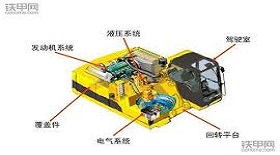Common faults of hydraulic system
The pressure loss. Due to the viscosity of the liquid, there is inevitable friction in the flow of the pipeline, so the liquid must lose some energy in the flow process. This part of energy loss mainly presents as pressure loss.
There are two kinds of pressure loss: along loss and local loss. The loss along the path is the pressure loss caused by friction when the liquid flows through a distance in a straight pipe with constant diameter. Partial loss is pressure loss caused by sudden change of pipeline section shape, change of flow direction or other form of flow resistance. The total pressure loss is equal to the sum of the local loss and the process loss. Due to the inevitable pressure loss, the rated pressure of the pump is slightly larger than the maximum working pressure required by the system. Generally, the maximum working pressure required by the system can be estimated by multiplying by a coefficient of 1.3-1.5.
Flow loss. In the hydraulic system, each pressure element has a relative motion surface, such as the inner surface of the hydraulic cylinder and the outer surface of the piston. If one side of the gap is high pressure oil and the other side is low pressure oil, the high pressure oil will flow through the gap to the low pressure area and cause leakage. At the same time, because the hydraulic component seal is not perfect, part of the oil will leak to the outside. This leakage causes a reduction in the actual flow, which is what we call flow loss.
Flow loss affects the speed of movement, and leakage is difficult to avoid absolutely, so the rated flow rate of the pump in the hydraulic system is slightly larger than the maximum flow required when the system is working. It can also be estimated by multiplying the maximum flow required for the system's work by a factor of 1.1~1.3.



